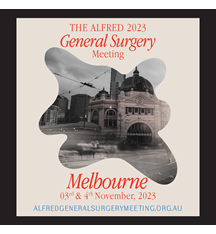2023 | Volume 24 | Issue 4
It has been a busy time for the Aotearoa New Zealand National Committee. The pace of health reforms has picked up as 2023 has progressed and government is engaging more with clinicians and those on the front line of the health system.
Driving this is the upcoming October election coupled with the fact that two new public health entities created by the reforms, Te Whatu Ora—Health New Zealand and Te Aka Whai Ora—Māori Health Authority had its first anniversary on 1 July.
There also seems to be a genuine intention by government health officials to make improvements and address some of the issues—some would call crises—in Aotearoa New Zealand’s public healthcare system.
Workforce
The big one is workforce shortages. According to the Health Workforce Plan released on 4 July, there is an 8000-strong healthcare worker shortfall, and that figure is projected to grow if nothing changes. In the past, the solution has been to recruit from overseas. Yet, these shortages are a global problem and the government has recognised the answer is to train and retain local workers.
RACS has been urging government to act on workforce issues for some time and has suggested both short and long-term measures. We were heartened to see the government announce a bump in medical school places by 50 for the 2024 intake. We have also been having discussions about gaining the incremental funding required to elevate non-training registrar roles into surgical training posts. The Workforce Plan includes ideas around increasing prevocational and vocational training programs, as well as actions to retain and attract back domestically trained staff.
Other challenges in the system
Inadequate hospital infrastructure, a burnt-out workforce, health inequities, clinical wait times, the carbon footprint of surgical services, and the so-called post-code lottery—these are other issues the healthcare system in Aotearoa New Zealand is grappling with. As well as bringing these issues to the attention of health officials we have also done so in the questions we have put to the five major political parties (Labour, National, Green Party, ACT, Te Pāti Māori) in the lead up to the election.
Through it all, we realise the onus is not wholly on government to address the problems. RACS needs to look at itself and see where it can flex and modernise to grow the surgical workforce. In the latest issue of Cutting Edge, the College’s Aotearoa New Zealand newsletter, surgical advisors Professor Spencer Beasley and Dr Sarah Rennie suggest it may be appropriate for non-FRACS surgeons (Specialist International Medical Graduates) to be allowed to become training supervisors. More information can be found on page 4.
One of the challenges is not having a single point of contact within government to engage with. This has been raised by many of the medical colleges and we understand the issue is being addressed.
It has never been more important for RACS to engage with government to influence the design of the health system in Aotearoa New Zealand. Being across nine surgical specialties, we have a broad view and can see where both the commonalities and the differences lie.



